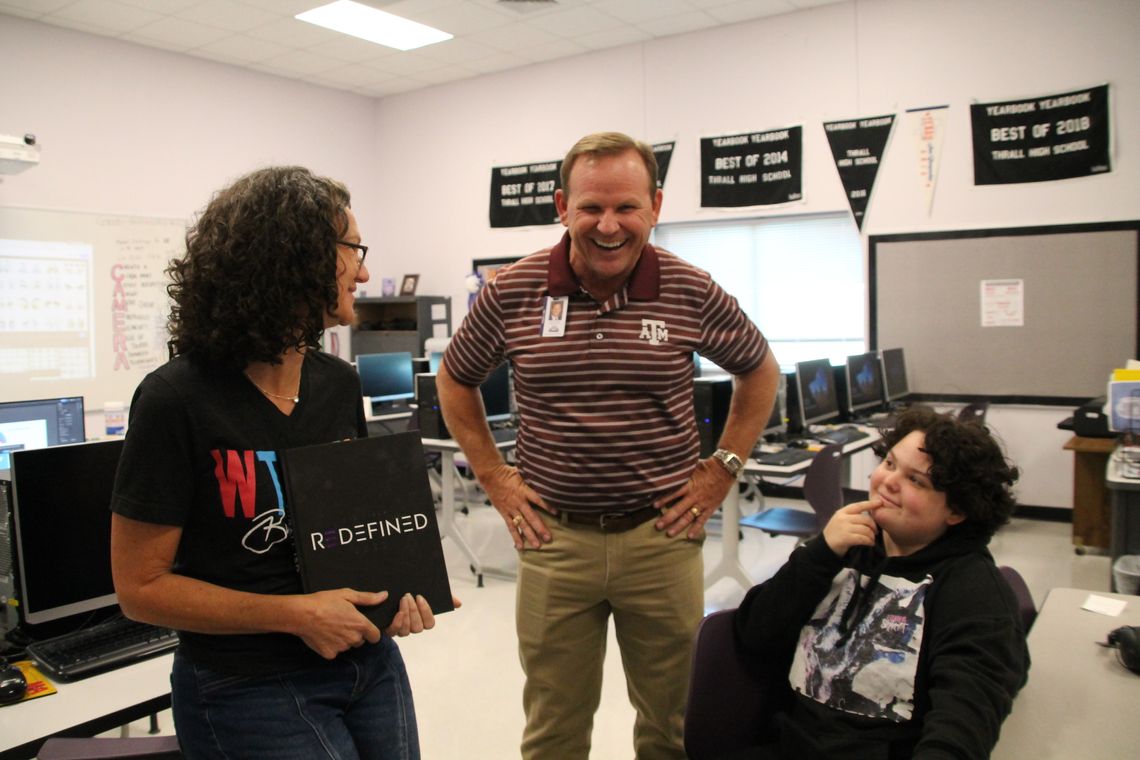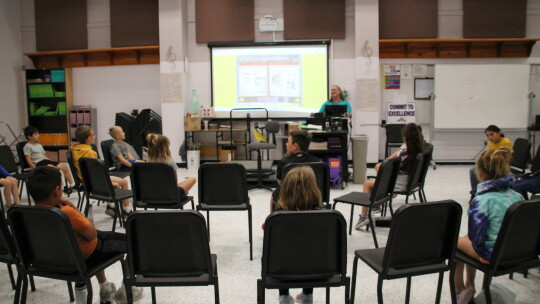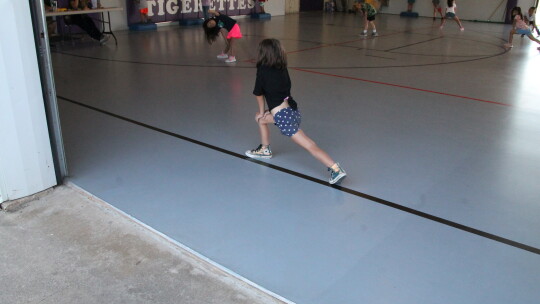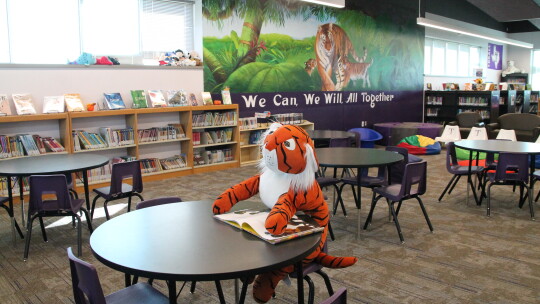THRALL — As society adjusts to the COVID-19 pandemic, many school districts across the state are still struggling to catch up from disruptions caused by illness, online learning and other factors.
But at Thrall Independent School District, students never really missed a beat.
According to the Texas Education Agency, across the state, the pandemic erased years of gains children had been making. On average, math scores declined 15 percent for the State of Texas Assessments of Academic Readiness test from 2019-2021, and 4 percent in reading during that time period.
However, with its population of only 810 students spread across three schools, Thrall Independent School District was an outlier, earning an overall score of 96, or an A rating, from the TEA’s state accountability ratings for the 2021-22 school year.
This is an even better score than the 90 score Thrall ISD earned prior to the pandemic.
“This was one of the highest scores in the state,” said Superintendent Tommy Hooker. “This was in part due to the continued success at the campuses of Thrall Middle School and Thrall High School, who were A campuses as of the last ratings by the TEA in 2019. Our Thrall Elementary made huge strides as they improved to the score of 87, which is a great score for elementary school campuses within the state.”
The A-F rating system was established by House Bill 22 in the 85th Legislature to offer parents, educators and other stakeholders a “transparent view of academic performance.”
Stability key to success On a recent morning, Hooker, who has been with the district since 2011, gave a tour of Thrall ISD, which is beginning construction on a three-phase, $65 million bond project that will include athletic- facility upgrades, a new elementary school building, an additional wing for the high school, and a renovation of the current elementary campus to convert it to a middle school.
As Hooker navigated the maze of buildings, he frequently stopped to visit with teachers, staff and students, and pick up any stray bit of trash he found to deposit in the waste bin.
At the elementary school building, Hooker paused at the band hall and unlocked the door — one of many new security measures the district has implemented in recent years. Inside a classroom decorated with treble clefs and a “Commit to Excellence” poster, a group of second graders sat in a circle listening to the sounds of a lively march. “We are talking about John Philip Sousa,” said Beth Butler, the band director, who has been with the district for 35 years. “He wrote over a hundred marches. We are listening to some of his music.”
For many Thrall ISD students who pursued band as one of their extracurricular activities, Butler has taught them every year for a decade or more. Hooker said this kind of consistency is a key factor in Thrall ISD’s success.
“I think the biggest factor for us is the stability with our teachers,” Hooker said. “In Region 13, we are one of the most stable school districts. We have very low turnover. The only major hiring that we have to do now is due to increased enrollment.”
In addition, Hooker said the school board is supportive of hiring enough teachers to keep classroom sizes well below state minimums.
Jolena Pokorny, the director of programs for the district and the former principal of the elementary school, said the administration has worked hard promoting staff retention since she began 12 years ago.
“When I was first hired, the district itself was going through a lot of change,” Pokorny said. “We had constant administration change, leadership change going on, classroom, coaching, all aspects of Thrall ISD were constantly changing,” Pokorny said. “Mr. Hooker and I started at right about the same time, and kind of made it our mission to hire good people, treat our people right and definitely value what they bring to Thrall ISD.”
To accomplish this, Pokorny said, school leaders communicate clear expectations, conduct staff surveys, encourage feedback, and hold exit interviews that also provide opportunities for anonymous input.
“We have this motto that we are all in this together,” Pokorny said. “Nobody is too good to lend a hand, regardless of the task.”
In addition, many teachers move up the ladder in their careers.
“We promote from within,” Hooker said. “We really feel that is valuable because it promotes a level of leadership where if you want to move up, there is an opportunity.”
According to the TEA’s Texas Academic Performance Report for 2020-21, the district’s effort has paid off, with a teacher turnover rate of 7.7 percent, compared to the region’s 14.8 percent and the state’s 14.3 percent overall.
Commitment to student success While low turnover is a factor in student success, how different members of the school community interact also plays a role, officials said. “It starts with the expectation of the parents treating school as work for their children, that this is their job,” Hooker said. “The kids are used to what is expected of them, and our expectations are high, no doubt, but they are realistic too.”
Kids are called “Student athletes,” with the student part coming first. “They have to be successful as a student to be a student athlete,” Pokorny said. “We work together as a team. All stakeholders coming together for the benefit of the students, both academically and athletically to make sure they have what they need to be successful both on the court and in the classroom.”
To support this goal, coaches and teachers frequently communicate, ensuring that grade checks are happening. In addition, students needing extra help in a subject or for their University Interscholastic League competitions receive tutoring.
“They have their advisory, or Tiger time, built into their days in their schedule and so there are times where they go,” Pokorny said. “It could be that they are in UIL academics so during advisory they go to their UIL coach and work specifically on that skill.” While academics are stressed, Hooker said that is not the only focus, with over 90 percent of high school students also involved in an extracurricular activity, including band, FFA, fine arts, Fellowship of Christian Athletes and more, and 95 percent involved in physical education or team sports.
“We don’t have as many offerings as Hutto, Taylor or the other larger schools, but the things we do have are huge to us, so our kids are really involved,” Hooker said.
The emphasis on a well-rounded education starts early. For example, at a time when many school districts across the country are cutting back on recess time and physical education, Thrall ISD does
the opposite. “It is a huge deal to our community for our kids to be active,” Hooker said. “Our (elementary) kids get (physical education) every day. We are way above the state minimum. We feel like academics and the well-being of our kiddos are all balanced.”
Hooker said the board supports this balanced approach to student education.
“They support all of those programs equally and do the funding and provide the support necessary for those to take place,” Hooker said.
Personal connections
Christina Strnad, a technology instructor at the high school and the adviser for the Tiger Yearbook, said another factor contributing to the success of students is the personal connection a small school district can offer.
“I think strong relationships are the main reason our students have continued to be successful, even with the challenges and setbacks we have faced over the past few years,” Strnad said. “When we had to do virtual instruction, we were still able to maintain some connection with students.”
Unlike most other school districts, Thrall ISD offered in-person learning on alternate days starting in the Fall of 2020 after researching ways to prevent a learning gap.
“We worked all the way through it,” Hooker said. “It paid off because we don’t have much of a gap there.”
Thrall High ninth grader Emma Mendoza, who had been in a virtual program in Hutto the prior year, said she found a community when she came to Thrall Middle School in the Fall of 2021.
“Virtual was tiring and really confusing,” Mendoza recalled. “It was hard to understand what the teachers were saying and the work. When I came to Thrall, I was nervous because it was my first time back to meeting with other students face to face … After a few weeks, I started feeling comfortable and welcomed. People held doors open for me and talked to me. I met all these cool people who became my friends.”
Strnad said these kinds of connections help students succeed.
“That’s an advantage of a smaller school that is the center of a tight community,” Strnad said. “I think it’s more difficult for districts with thousands of students to maintain the level of personal connections that we enjoy here. We get to know our students pretty well and can be more responsive to their individual needs.”
“ We have this motto that we are all in this together. Nobody is too good to lend a hand, regardless of the task.”
- Jolena Pokorny, director of programs for Thrall Independent School District












